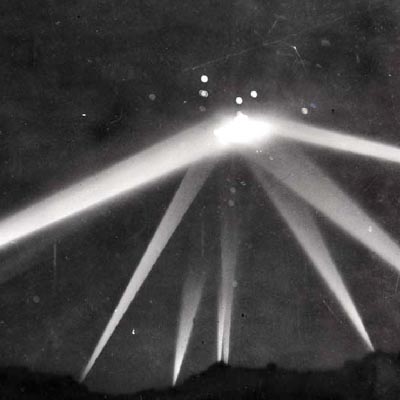The Battle of Los Angeles is the name given to a rumored attack on the US by Imperial Japan and the subsequent anti-aircraft artillery barrage which took place February 24-25 1942, over Los Angeles, California. The incident occurred less than three months after the U.S. entered World War II, and one day after the bombardment of Ellwood near Santa Barbara on 23 February.
At about 3AM, an unidentified aerial object was reported over the city. Searchlights raked the sky and batteries of anti-aircraft cannons and machine guns opened fire, lobbing thousands of rounds into the sky. From the ground, some civilians and soldiers saw planes, others saw a dirigible or a balloon, and many saw nothing. The searchlights, however, seemed to track a large, slow moving object unfazed by the immense firepower trained upon it.
Initially, the target of the aerial barrage was thought to be an attacking force from Japan, but speaking at a press conference shortly afterward, Secretary of the Navy Frank Knox called the purported attack a “false alarm”. Newspapers of the time published a number of reports and speculations of a cover-up to conceal an actual invasion by enemy airplanes.
When documenting the incident in 1949, the United States Coast Artillery Association identified a meteorological balloon sent aloft at 1:00 am as having “started all the shooting” and concluded that “once the firing started, imagination created all kinds of targets in the sky and everyone joined in”. In 1983, the U.S. Office of Air Force History attributed the event to a case of “war nerves” triggered by a lost weather balloon and exacerbated by stray flares and shell bursts from adjoining batteries.
